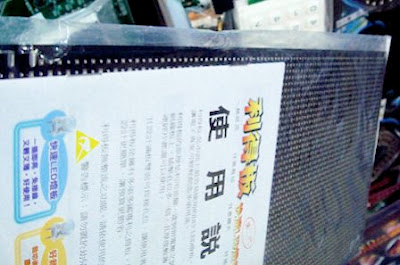 Big BRAINS' LED MIRROR
Big BRAINS' LED MIRRORSpectacular Use for LEDs:
Converting LEDs into Mirrors
Who would think this LED light emitting diode could be transformed into a mirror? The Big Brain knows how.
_________________________
The Brain is inventing another project that it can control and operate - this new design uses LED mirrors, made possible by the introduction of large SMT panels for vast arrays of LEDs.
The LED Mirror is a new breed in mirror technology according to the Big Brain. Take for example one panel of 1,000 to 10,000 LEDs, each LED is light sensitive. Curve the substrate into a half round open ended cylinder and it becomes a kind light gathering cylindrical device, the electronic image of which can be handled with software.
The panel will flex making it change shape and Big Brain is capable of controlling it and can internally mathematically apply corrections to the shape with an end result of spectacular "deep" imaging - a new application that could possibly usher in a new telescope, that of the LED telescope design.
The LED Mirror is a new breed in mirror technology according to the Big Brain. Take for example one panel of 1,000 to 10,000 LEDs, each LED is light sensitive. Curve the substrate into a half round open ended cylinder and it becomes a kind light gathering cylindrical device, the electronic image of which can be handled with software.
The panel will flex making it change shape and Big Brain is capable of controlling it and can internally mathematically apply corrections to the shape with an end result of spectacular "deep" imaging - a new application that could possibly usher in a new telescope, that of the LED telescope design.
Switching to infrared LEDs will create an infrared telescope detector. Other color LEDs, i.e. yellow and green, have different spectral ranges and can create varying wavelength detector mirrors.
Informal experiments (at the store) show the thinner LED array pcbs can flex into a spherical shape. This "giant eye" would be perfectly matched to a "seeing all" Big Brain with 3,200 controlling I/Os. It could also become a giant photon collector with scientific uses, or it could decode impinging sound waves from converted light on a wide band scale. Such a lensed panel could measure flat distributions of various light waves for occultation and binary star work or become an "incident photon collector."
If we could just convince the manufacturer to make the pcbs round and put larger numbers of closely packed LEDs on the board... That may be possible on a DIY basis by paralleling a clone of what's already on the board. A hundred LED board could have 200, a 500 could have 1,000 and a thousand could have 2000. That's one board.
Ten boards would have 20,000 LEDs. Fifty boards for a large project would match the Big Brain's first 100,000 processors. This would make a special display for the Big Brain with multi function capability to be used to output binary, decimal, hex, images, alphanumerics, waveforms, languages, mathematics, and special configurations all at the same time.
Definitions
LED Mirror - the use of LEDs as sensor input devices to gather light and form an electronic mirror
LED Mirror Telescope - a telescope made from a series of LEDs that act as an electronic primary mirror
LED Array Flexing - a method of bending the board containing the array of LEDs to impart a shape condusive to imaging

